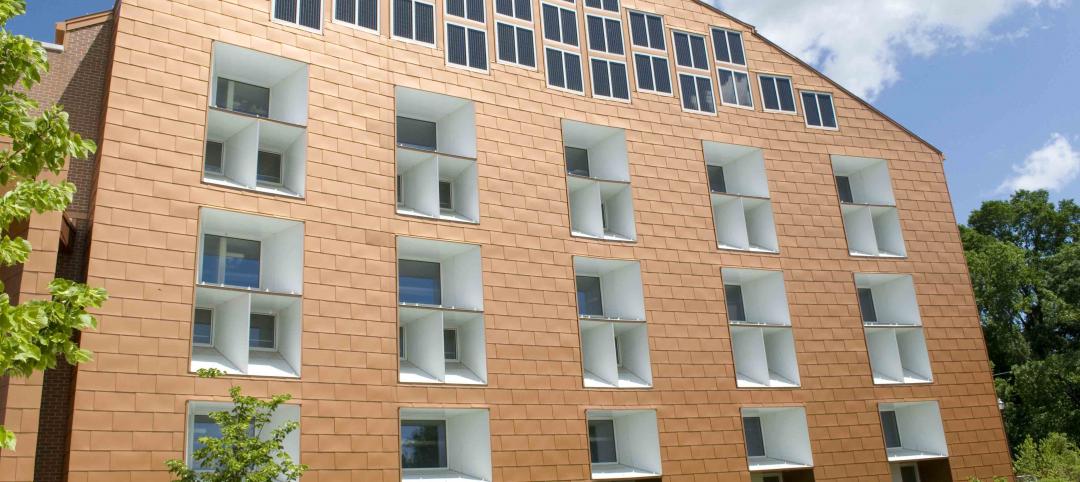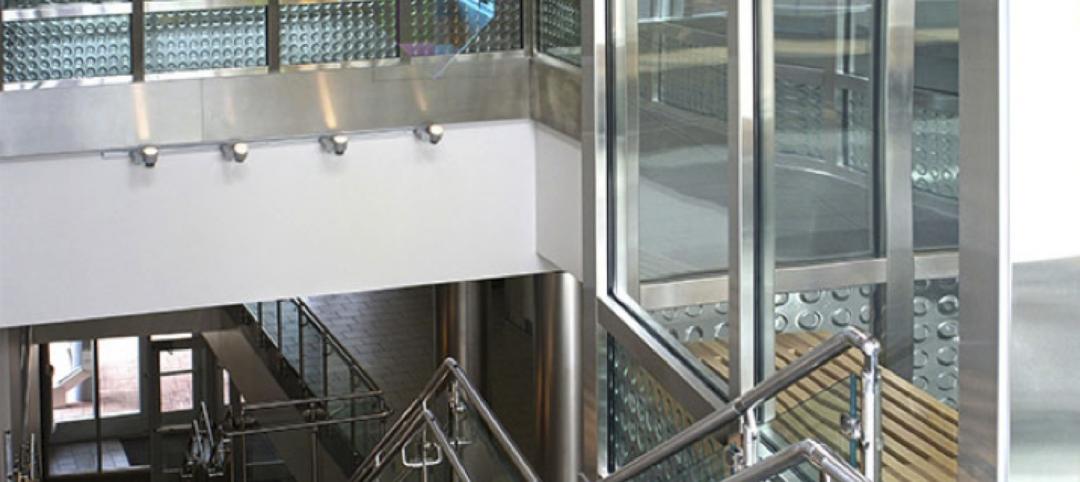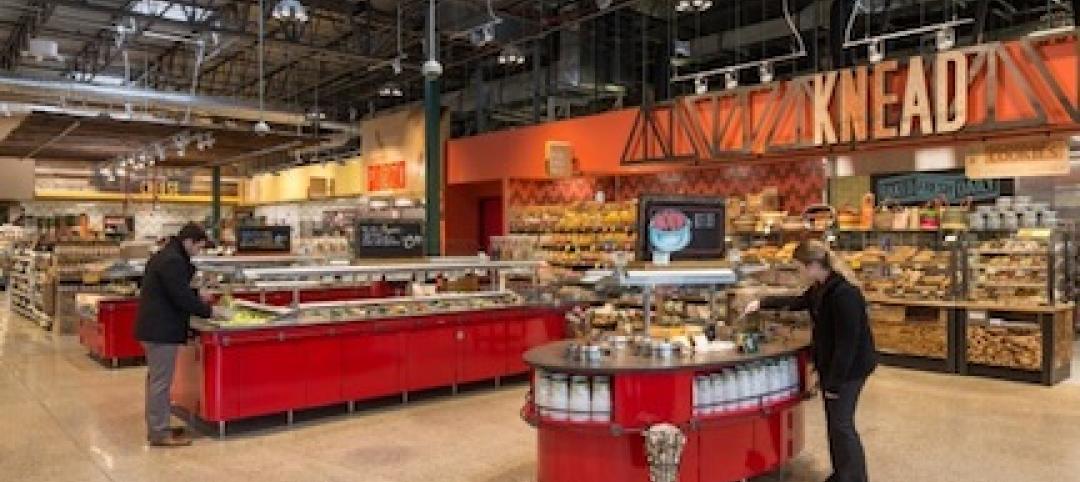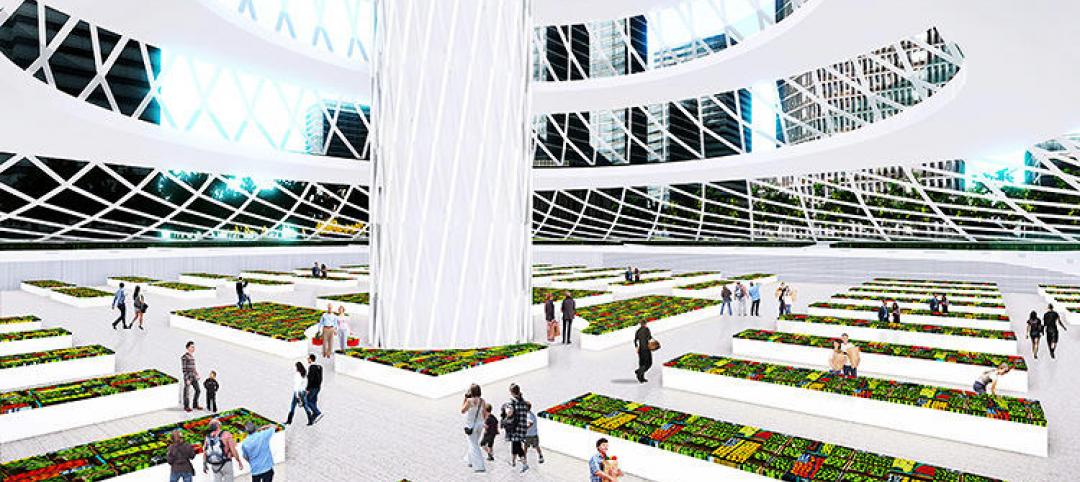Terranova Ranch in Fresno, Calif., grows more than 25 different crops on 6,000 acres. The company, which started in 1981, has focused its attention lately on methods that keep its soil, water, and air quality as healthy and sustainable as possible.
The design for Terranova Ranch’s new office pavilion is the first net-zero carbon and net positive energy project by Paul Halajian Architects (PHA), and the client’s design choices were informed by the use of cove.tool’s web-based building performance app.
Terranova Ranch’s aimed for a 100 percent reduction in operational carbon emissions, and the architect provided several options toward meeting or exceeding that goal. (Cove.tool shared some of the details of this case study with BD+C.)
GOING BEYOND CODE MINIMUMS
Initially, the energy model for the 5,800-sf office building was designed to follow code minimum baseline assumptions from California’s Title 24, version 2019, which offered a carbon reduction of 12 percent. PHA’s project architect conducted several analyses on possible improvements to reduce the overall Energy Use Intensity (EUI), which in this model was 42.52 kBtu/sf/year.
These analyses measured the impacts of the building’s HVAC, lighting, equipment, hot water, fans, and pumps. The first proposed design change was an envelope upgrade, from the mandatory minimum of R-19 to R-30 by adding two inches of Expanded Polystyrene (EPS) foam board to the exterior walls; and three inches of foam board insulation to the roof, which increased its R-value from 30 to 41. These changes would increase the building’s overall carbon reduction in base design to 20 percent and reduce the EUI to 38.
GLAZING’S BENEFITS DIDN’T PENCIL
The second option the architect investigated for Terranova Ranch combined the proposed envelope upgrade with improved glazing using Solarban 72 Acuity glass or Starphire glass with a u-value of 0.28 and solar heat coefficient of 0.28. (The baseline requirement is Solarban 60.) However, using cove.tool analysis tool, the architect determined that the whole-building EUI would have only reduced to 37, and only increased the carbon reduction by 2 percent from the first option. There were also cost considerations that made the glazing option less favorable.
The third upgrade option explored introduced 2,200 sf of monocrystalline solar panels, angled at a 15-degree incline atop a shaded parking structure. This option would reduce the building’s carbon emissions by 84 percent (from option No. 2’s 22 percent) and decrease the EUI to 7 form 37. Terranova Ranch was enthusiastic about this option.

A fourth alternative explored introducing heat recovery by adding an energy recovery ventilator in the ceiling. This option allowed for a carbon reduction of 103 percent and an EUI score of negative 1.5. The client agreed to move forward in the building’s design with each option except the glazing upgrade.
SUNLIGHT EXPOSURE WILL REDUCE BUILDING’S LIGHTING NEEDS
Along with the energy study, the architect conducted other analyses. Using cove.tool software, the architect observed that 85 percent of the office building’s interior would have access to “quality exterior views,” which in turn would earn the product LEED Views Credit. A daylight analysis of the architect’s design also showed that the building would be exposed to up to 12 hours of sunlight per day, reducing the design’s artificial lighting requirement.


While most clients might not be as sustainably inclined as Terranova Ranch, conducting data-driven analyses can be fruitful as a common practice that allows the design team and client to delve into different design scenarios to achieve an intended performance goal.
Construction on the office pavilion was scheduled to begin in late spring. The architect and client did not disclose construction costs.
Related Stories
Sponsored | | Sep 2, 2014
Judson University’s Harm A. Weber Academic Center resembles copper, but its sustainability efforts are pure gold
The building’s custom-fabricated wall panels look like copper, but are actually flat metal sheets coated with Valspar’s signature Fluropon Copper Penny coating.
| Aug 25, 2014
Glazing plays key role in reinventing stairway design
Within the architectural community, a movement called "active design" seeks to convert barren and unappealing stairwells originally conceived as emergency contingencies into well-designed architectural focal points. SPONSORED CONTENT
| Aug 1, 2014
GBCI joins up with Bureau Veritas to support LEED certification process in global hubs
Partnership intended to improve LEED certification process for projects in countries around the globe.
| Jul 28, 2014
Commercial energy-efficiency retrofits will represent nearly $960 billion investment in next decade
Payback periods remain a critical factor for decisionmakers on retrofit projects, report finds.
| Jul 25, 2014
Grocery stores choosing Green Globes for building sustainability certification
The Green Building Initiative (GBI) has announced a wave of Green Globes certifications for new grocery stores, including New Seasons Markets, Whole Foods, Price Chopper, Aldi’s, Harris Teeter, Wegmans, and Publix.
| Jul 21, 2014
Schindler Elevator Corp.'s new manufacturing facility receives LEED Green Excellence Award
Pennsylvania plant is the first LEED Gold certified elevator manufacturing facility in North America.
| Jul 17, 2014
A harmful trade-off many U.S. green buildings make
The Urban Green Council addresses a concern that many "green" buildings in the U.S. have: poor insulation.
| Jul 16, 2014
Check out this tree-like skyscraper concept for vertical farming
Aprilli Design Studio has stepped forward with a new idea for a vertical farm, which is intended to resemble a giant tree. It uses lightweight decks as outdoor growing space, adding up to about 25 acres of space.
| Jul 14, 2014
Meet the bamboo-tent hotel that can grow
Beijing-based design cooperative Penda designed a bamboo hotel that can easily expand vertically or horizontally.















